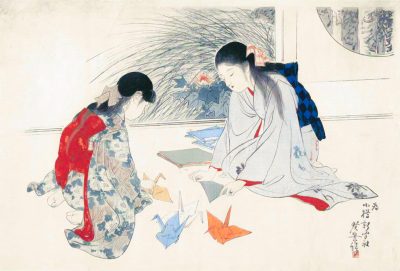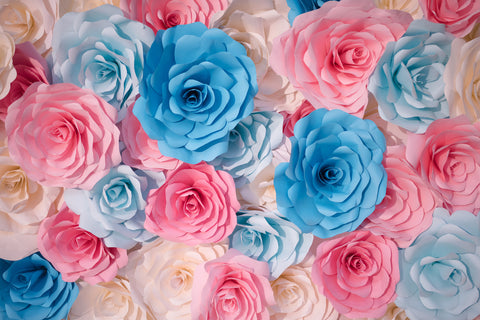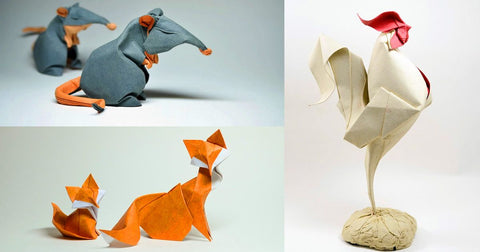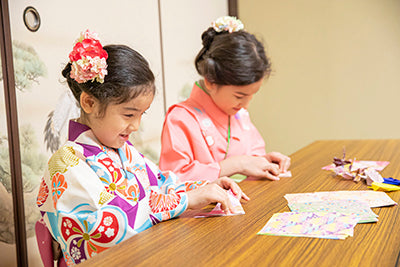Folding Creativity: The Endless Possibilities of Japanese Origami Art

Origami art is an ancient paper folding style, consisting of complex folds that form various shapes, animals, and more. The word "ori" translates to folding, while the word "kami" translates to paper, thus meaning folding paper in Japanese. This art form originated in China alongside the creation of paper. Once in Japan, origami art became a widespread form of expression, used in Shinto ceremonies, as a decoration for gifts, in festivals/celebrations, and in other aspects of Japanese culture. This art form has transcended time, becoming fully integrated with modern culture and used not only in Japan but globally.
Below, we explore Japanese origami, from its humble origins to its impact on Japan and the world.
What is Origami?
Depending on who you ask about this question, you may receive different answers. To some, origami is one of many easy crafts for kids in which paper is folded into various shapes or animals, such as a cat. For others, origami is a traditional Japanese art form that can vary in difficulty depending on the person.
When creating origami art, one thing is for certain, the traditional method of this art form requires a single square sheet to be used. This sheet often contains one side with color, allowing for a more fun process and creation. The paper in use may not be cut, glued, drawn on, taped, etc. The only tools needed to create origami are patience, practice, a set of hands, and sheets of washi paper ready to fold.
A Brief History of Origami
Against popular belief, origami did not originate in Japan. Instead, the early versions of this art form began in China around the same time as the invention of paper (about 105 AD). Paper folding in China, known as zhezhi, was first used in ceremonies, such as funerals. At these ceremonies, yellow/gold paper was folded in the shape of currency, as it was expected to be burned after the event.

It was not until the sixth century that paper was introduced to Japan, leading to paper folding as a part of Shinto ceremonies. However, in the Edo Period, this outlook on origami shifted as the art form became more of a leisurely activity/hobby. During this time, it was common to fold paper into items that would be seen in nature, such as birds and flowers.
During the Meiji Period, this art form became a necessary skill for each kid to learn, as schools began implementing it into the curriculum in elementary school. Since then, learning this skill has continued into modern times, with schools in Japan continuing to teach origami art to students in kindergarten.

Origami art has continued to evolve through the years to include more items and varying techniques. While once it was considered against the norm to do anything but fold origami paper, there are various artists who now incorporate clever techniques into their origami creations. These techniques can include small cuts in the paper to make it easier to form certain shapes. Others continue with traditional techniques, only using their hands and folding skills to create paper models.
The Basics of Origami Paper Folding Styles
Various art styles of Japanese origami exist, from traditional to technical, each offering different benefits to the folder. The most basic (and oldest) form of origami is traditional, which typically includes simplistic forms of animals/objects. The main goal of traditional origami is to produce models that connect a single sheet of paper to Japanese culture through simplicity and beauty.

From traditional origami, the styles become increasingly more complex. For example, modular origami uses many pieces of folded paper to create a bigger piece of art. Typically, this style of origami is crafted using identically folded pieces of paper.

Another unique style is wet origami, which was created to produce art that offers a more rounded appearance. It consists of wetting origami paper, to create a more flexible tool that is easier to mold. Thus, allowing the origami artist to create more realistic pieces with softer lines than traditional or modular origami. Other styles include pureland (more ideal for beginners) and tesselation.
The Global Impact of Origami's Complex Folds

The art of origami has infiltrated many aspects of global culture, from fashion to other art forms. It's not uncommon to see versions of origami incorporated into shoes, dresses, music, literature, video games, and more. Beyond entertainment and art forms, ideas of origami have become an inspiration for other various industries, from science to therapy. For example, origami has helped solve problems for space explorers, such as transporting larger goods, which can become more compact through origami-inspired folds.
Origami's Influence on Japanese Culture Today

Since its inception, origami has become a major facet of Japanese culture due to its versatile uses. Whether taught by a parent or at school, nearly all, if not all, children in Japan are taught this art form. It is used as a method of meditation to help calm and entertain children on public transport, and it is crafted as decoration during ceremonies (such as weddings or funerals). It is even used as a method to wish for good health for those under the weather and ailing, usually in the form of a paper crane chain that is strung from the ceiling in hospitals. Because of its popularity, it is also seen in various mediums in Japan, from architecture styles to fashion and more.
Celebrate Japanese Art Forms and Culture with Japan Crate
Now that you've learned about origami as a Japanese art form and its connection to Japanese culture, you can continue gaining knowledge about the country with Japan Crate. As a snack subscription service, Japan Crate aims to bring authentic snacks and treats to your door each month based on a theme related to Japan's culture. From events to significant aspects of culture, each month, you'll be wowed by the selection of high-quality sweet and savory goodies included in each box. With crate designs based on the theme and Japanese elements, unboxing is truly filled with wonder each month.
Jump on the Japan Crate bandwagon by subscribing now so you can experience Japanese snacks and more from the comfort of your home!
Author Bio







Leave a comment